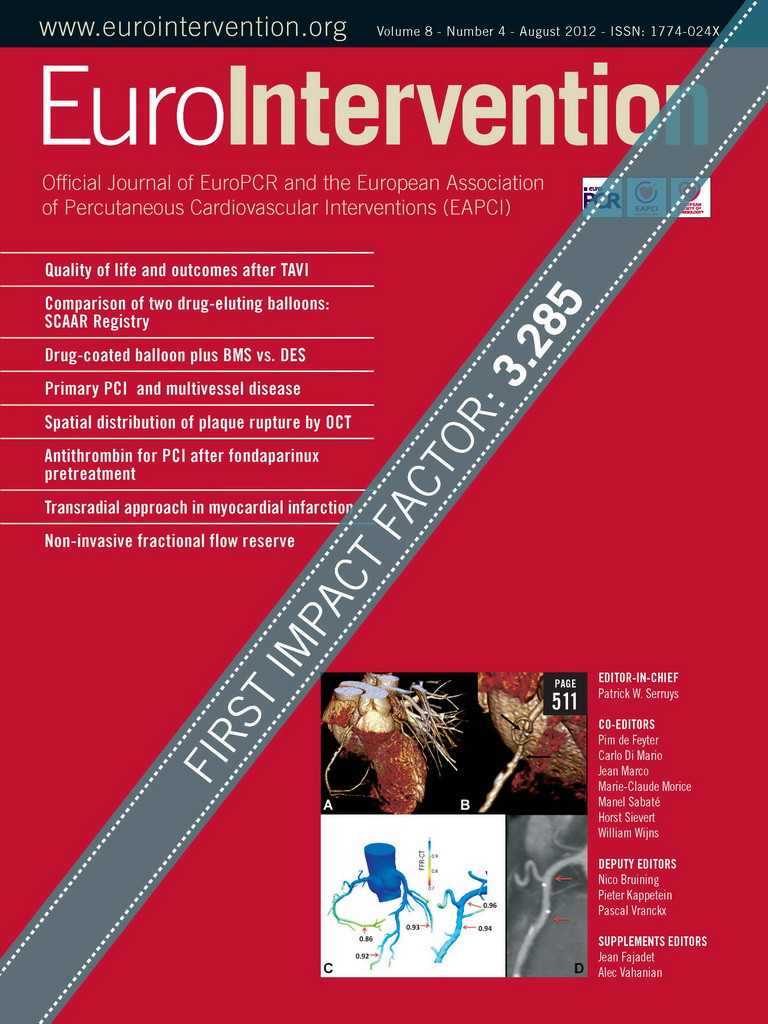Dear colleagues,
Although the Impact Factor (IF) was created in 1955 for a world without faxes, computers, smartphones or the Internet, it is still recognised today as a critical and very academic parameter of scientific assessment. In the life of a scientific journal, the first milestone is to be recognised and indexed by PubMed, the second is to have your official IF determined.
While we were aware of its importance, we remained cautious about requesting our IF immediately, choosing to follow the unusual strategy of waiting in order to benefit from the extra exposure and momentum gained after our early years of existence. Like this we hoped to achieve a higher first IF. The result of this strategy has paid off been better than we expected –we have now received our IF and it is very close to 3.3– this has put us in an excellent position with respect to our “so-called” long-term competitors.
We have now arrived at the end of the beginning for EuroIntervention and while there is still a long way to go before we can aspire to join the ranks of the European Heart Journal or the other, US based, cardiology journals, we have begun the long climb, we have received our “lettres de noblesses”. At the present, what is still unknown, is whether journals that deal with percutaneous interventions remain in the 2-5 IF range or progress beyond this level.
Still, while we are proud of our hard won IF, we would like to reiterate our wish for an evolution – an upgrade or update of the IF itself. It is clear that in today’s world of eblasts, iPads and instant downloads, not to mention Facebook and Twitter, that 57 years after its inception, the IF should be rejuvenated and readjusted to better reflect our changing world.
The third milestone
If you have been following us these last years you know we will not take the time to rest on our laurels. We have achieved our first two milestones –PubMed and the Impact Factor– now we have given ourselves the challenge of a third “défi”… to be in the top 25% of Cardiology Journals published internationally. We are now firmly in the top 50% (the 2nd quartile), but the reality today within the academic world requires that you submit papers only to journals within the top 25% (1st quartile) as funding will become increasingly linked to this quartile. To see where we are today requires a simple calculation. There are 117 journals in our field, EuroIntervention is now number 36 and 25% of 117 is approximately number 30. For EuroIntervention to enter the 1st quartile we would need an IF of at least 3.7. The challenge today, our 3rd milestone, is that we try to make the jump to an IF of 4.0 or above.
Over the next few months we will be analysing this and sharing with you our ideas of how striving after a certain excellence, and anticipating the needs of our community can only work to benefit us all, pushing the Journal to new heights with an increasing IF, and offering a European and international forum of quality for our latest research and our speciality.
Finally, on a personal note, I would like to sincerely thank the authors who submitted their articles and bestowed their trust on, what was before, a non -IF journal, and to the many reviewers who gave us their time and effort without any tangible reward except the desire to further the work of our European science. On behalf of our team, we look forward to carrying on the work with both authors and reviewers, which now will undoubtedly entail even more submissions and review work. Our future work is cut out for us; how we succeed depends on both you and ourselves, but only the numbers will tell if we reach our third milestone.

